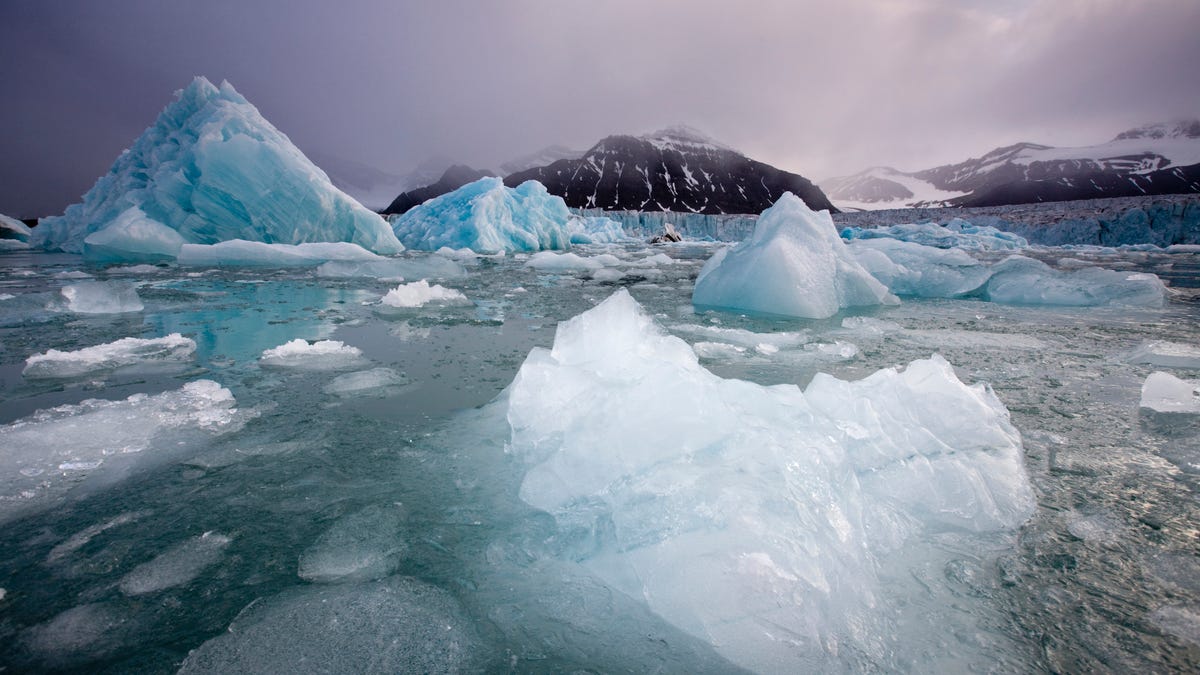Researchers May Have Discovered Origin of Floating Microplastics in Arctic Ocean
Using models of ocean currents and simulations of floating microplastics, researchers sought to determine where the particles originated.

Icebergs float off the coast of Nordfjorden in Norway. The waters may also contain small pieces of plastic.
The high levels of microplastics found throughout the Arctic Ocean appear to be coming from European rivers, according to a study published Thursday in the journal Scientific Reports. While previous research has confirmed concentrations of microplastic particles in the Arctic Ocean, their origins have been unclear.
To track the aquatic path of the microplastic particles found in the Arctic Ocean, researchers used models of ocean currents between 2007 and 2017. They combined the models of ocean currents with simulations of floating microplastic movements. Using this method, the researchers created simulations of the release of microplastics from 21 major rivers across northern Europe and the Arctic. The simulation modeled the microplastic movements over decades.
Next, the researchers compared the results of the simulation with seawater samples collected in 2017 and 2018 from sites off Norway's west coast. Analysis of the seawater samples yielded microplastic particles consistent with the researcher's simulation, reinforcing the theory of European origins.
Microplastics are created when discarded plastic breaks up into smaller and smaller pieces that cannot be cleaned up or contained. The effects of microplastics on ecosystems and on living beings are not understood yet, but their growing concentrations in waters worldwide have been spurring scientists to step up their research.
"This circulation of extremely durable, floating plastic through the regional Arctic ecosystems may have far reaching consequences, for example by ingestion by invertebrates, fish, birds, and mammals -- inducing a wide array of detrimental physiological responses," the researchers said in their paper.
Almost 400 million tons of plastic are produced annually, according to research published in Nature, and this amount is expected to double by 2050.

